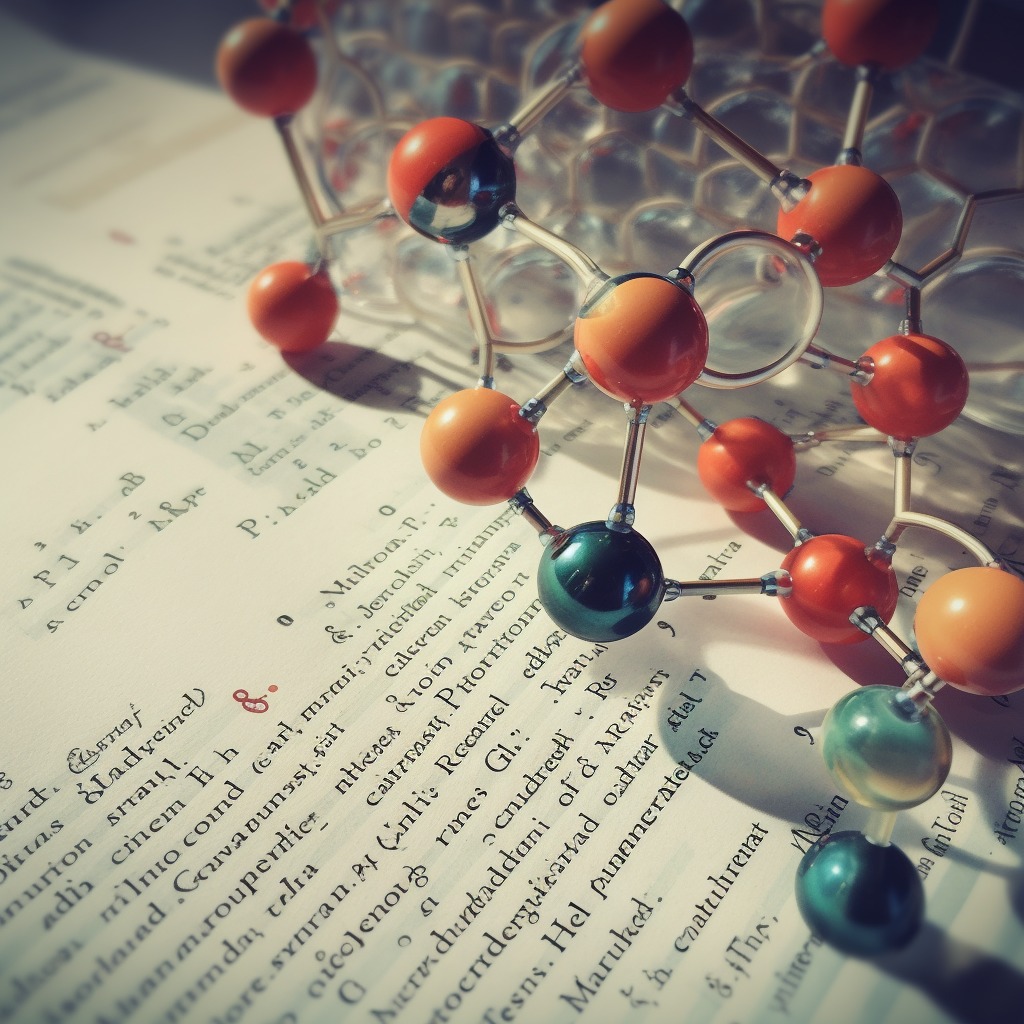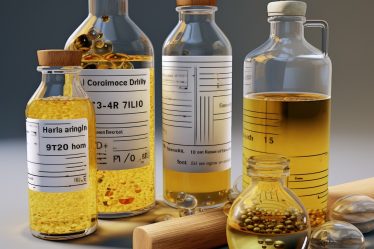
Peptide bonds don’t just appear in biochemistry textbooks; they serve as the backbone of proteins and are fundamental to life. These chemical links are crucial in biological processes, from cellular function to pharmaceutical development.
This blog aims to be your go-to guide for everything related to peptide bonds. Whether you’re a student preparing for an exam, a teacher enriching your curriculum, or a chemistry tutor, this guide offers valuable insights.
Our practical guide is designed for students, teachers, tutors, and anyone captivated by the world of biochemistry.
Discover your ideal chemistry tutor at meet’n’learn and skyrocket your understanding to new heights!
Here’s a glimpse of what you’ll learn:
- The chemistry behind peptide bonds
- How peptide bonds form
- Their role in protein structure
- Practical applications and educational importance
Want to expand your chemistry horizons? Our World of Chemistry offers a plethora of free educational blogs.
Introduction to Peptide Bonds
Regarding the structure of proteins, peptide bonds hold a place of paramount importance. These bonds link amino acids, the basic units of proteins, in a chain-like fashion. But what exactly is a peptide bond, and why does it matter so much in biochemistry?
A peptide bond forms when the carboxyl group of one amino acid reacts with the amino group of another, releasing a molecule of water in the process. This type of bond is a covalent bond, meaning it involves sharing electrons between atoms. The result is a peptide chain that can grow in length, eventually forming a protein.
Understanding peptide bonds is not just an academic exercise; it has practical implications too. From drug development to genetic engineering, the role of peptide bonds is far-reaching.
Introduction to Proteins and Carbohydrates.
Chemistry of Peptide Bonds: The Building Blocks of Proteins
Peptide bonds serve as the linchpin in the architecture of proteins. But what exactly constitutes a peptide bond at the molecular level? To fully grasp the significance of peptide bonds, we need to delve into the chemistry that governs them.
Peptide bond: Key Terms and Concepts
At its core, a peptide bond is a covalent bond that forms between the carboxyl group of one amino acid and the amino group of another. This bond results from a dehydration reaction, where a water molecule gets eliminated.
Discover how Hydrogen Bonds and Covalent Bonds are formed, and learn to Differentiate Them from Ionic Bonds.
Several key terms are essential for understanding peptide bonds:
- Carboxyl Group: The -COOH functional group in amino acids.
- Amino Group: The -NH2 functional group in amino acids.
- Dehydration Reaction: A chemical reaction that involves the loss of a water molecule.
Introduction to the Periodic Table and Functional Groups in Organic Chemistry.
Chemical Reactions and Formulas
The formation of a peptide bond can be represented by the following chemical equation:
C1H2NO + H2NO2 → C2H3N2O2 + H2O
This equation illustrates how the carboxyl group of one amino acid reacts with the amino group of another, forming a peptide bond and releasing a water molecule. The process is a classic example of a dehydration reaction.
Key Takeaways:- Peptide bonds link amino acids to form the backbone of proteins.
- They are covalent bonds, formed through a dehydration reaction.
- Understanding peptide bonds has real-world applications in various scientific fields.
How to Balance Chemical Equations?
Formation of Peptide Bonds: From Amino Acids to Proteins
Peptide bonds don’t just spontaneously form; they result from specific chemical reactions between amino acids. Understanding the formation of peptide bonds is crucial for grasping how simple amino acids can come together to create complex protein structures.
Theoretical Aspects
The formation of a peptide bond is a condensation reaction, also known as a dehydration synthesis. In this reaction, the carboxyl group of one amino acid and the amino group of another amino acid come together, releasing a water molecule.
Theoretically, the reaction is thermodynamically favorable under physiological conditions. This means that in the environment of a cell, the formation of peptide bonds is not just possible but likely.
Practical Aspects
Understanding the formation of peptide bonds isn’t just for academic interest; it also has practical applications. For instance, in the pharmaceutical industry, the knowledge of peptide bond formation is crucial for drug design, especially for medications that interact with proteins.
Moreover, in biotechnology, forming or breaking peptide bonds is essential for enzyme engineering and the production of synthetic proteins. These applications underscore the importance of understanding the practical aspects of peptide bond formation.
Discover the fundamentals of Electrochemistry and Redox Reactions.
Characteristics of Peptide Bonds: Understanding Polarity and Constraints
Peptide bonds are not just simple links between amino acids; they have unique characteristics that influence the structure and function of proteins. In this section, we’ll explore the polarity, resonance, and rotational freedom associated with peptide bonds.
Polarity and Resonance
Peptide bonds exhibit partial double-bond character due to resonance. This phenomenon occurs when electrons are delocalized between the carbonyl oxygen and the nitrogen atom, creating a resonance hybrid. As a result, peptide bonds have a degree of polarity, with partial negative and positive charges on the oxygen and nitrogen atoms, respectively.
The resonance also contributes to the planar nature of the peptide bond, restricting its rotational freedom. This characteristic is vital for the stable structure of proteins.
Rotational Freedom
While peptide bonds are relatively rigid due to resonance, the angles around the alpha-carbons in a polypeptide chain have some rotational freedom. These angles, known as the phi (Φ) and psi (Ψ) angles, are crucial for the folding and overall structure of proteins.
Understanding these rotational freedoms is essential for protein engineering and studying protein folding, as they can influence the protein’s final three-dimensional structure and, consequently, its function.
The basics of Polymers.
Key Characteristics of Peptide Bonds
Peptide bonds have unique characteristics that influence the structure and function of proteins. Below is a table summarizing these key features:
| Characteristic | Description | Implication for Protein Structure |
|---|---|---|
| Polarity | Partial double-bond character due to resonance leads to partial atom charges. | Contributes to the stability and folding of proteins. |
| Resonance | Electrons are delocalized between the carbonyl oxygen and the nitrogen atom. | Restricts rotational freedom, leading to a more rigid and stable structure. |
| Rotational Freedom | Angles around the alpha-carbons (phi Φ and psi Ψ) have some rotation freedom. | Crucial for the folding and overall three-dimensional structure of proteins. |
Explore Acids, Bases, pH, master Acid-Base Titration and learn to Calculate Solution Concentrations.
Peptide Bond Hydrolysis: Breaking Down the Bonds
While forming peptide bonds is essential for building proteins, breaking these bonds is equally important for various biological processes. This chapter will delve into the enzymatic breakdown of peptide bonds and their significance in cellular activities.
Enzymatic Breakdown
Peptide bonds can be hydrolyzed or broken down through a process facilitated by enzymes like proteases. These enzymes catalyze the addition of a water molecule across the peptide bond, effectively reversing the dehydration reaction that formed the bond in the first place.
Enzymatic hydrolysis is a critical process in digestion, where proteins in the food are broken down into constituent amino acids for absorption. It’s also important in cellular processes like protein turnover, where old or damaged proteins are degraded.
Importance in Cellular Processes
The hydrolysis of peptide bonds isn’t limited to digestion; it plays a pivotal role in various cellular processes. For instance, targeted proteins are marked for degradation in the ubiquitin-proteasome pathway and then hydrolyzed into amino acids.
Understanding the mechanisms of peptide bond hydrolysis is crucial for fields like molecular biology and pharmacology. For example, certain drugs aim to inhibit proteases to treat conditions like hypertension and viral infections.
Discover the chemistry behind Water and Photosynthesis.
Peptide Bonds in Protein Structure: The Architect of Proteins
Peptide bonds are more than just connectors; they are architects that help shape the intricate structure of proteins. In this section, we’ll explore how peptide bonds contribute to the primary structure of proteins and their role in protein folding.
Role in Primary Structure
The primary structure of a protein refers to the sequence of amino acids linked by peptide bonds. This linear arrangement is the foundation upon which all other levels of protein structure are built. The nature and sequence of these bonds directly influence the protein’s properties and functions.
For example, a change in just one peptide bond can result in a completely different protein with altered functions, as seen in genetic mutations like sickle-cell anemia.
Importance in Protein Folding
Peptide bonds also play a crucial role in the secondary and tertiary structures of proteins. These higher-order structures are formed through various interactions, including hydrogen bonding, which often involves peptide bonds.
Understanding the role of peptide bonds in protein folding is essential for fields like bioinformatics and structural biology, where predicting protein structures is a significant focus.
Applications and Importance
Calculating peptide bond energy is crucial for understanding protein stability and interactions. It’s often used in computational biology to predict protein structures and in pharmacology for drug design.
For example, a better understanding of peptide bond energy can lead to the development of more effective enzyme inhibitors, which are a class of drugs used in various medical treatments.
Need help with biology topics? Explore our extensive collection of biology educational blog posts designed to simplify complex concepts for you. Whether it’s photosynthesis, the intricacies of green algae, understanding bacteria and viruses, or delving into the fascinating world of genetics and cells, our resources have got you covered. Expand your knowledge and enhance your learning journey with us today.
Educational Importance: The Role of Tutors in Understanding Peptide Bonds
Understanding the intricacies of peptide bonds is not just a matter for scientists and researchers; it’s also crucial for students and educators. In this section, we’ll discuss tutors’ role in helping students grasp the complexities of peptide bonds and protein structure.
Tutors serve as a bridge between theoretical knowledge and practical understanding. They can break down complex topics like peptide bonds into digestible information, making it easier for students to grasp the subject matter.
Here are some ways tutors can facilitate a better understanding of peptide bonds:
- Providing real-world examples to illustrate the importance of peptide bonds in biological systems.
- Offering hands-on experiments to demonstrate the formation and breaking of peptide bonds.
- Utilizing computational tools to simulate peptide bond formation and hydrolysis, offering a more interactive learning experience.
Are you looking for a chemistry tutor? Enter “chemistry tutor Glasgow” or “chemistry teacher Sheffield” on your preferred tutoring platform, such as meet’n’learn, to find a teacher who can meet your specific needs.
If you thrive in group learning environments, search “chemistry classes London” or “chemistry lessons Manchester” online to discover local schools offering chemistry lessons.
Whether you’re a student looking to deepen your understanding of biochemistry or a teacher aiming to bring complex scientific concepts to the classroom, tutors can be invaluable resources for learning about peptide bonds.
How a tutor can help Make Science Fun.
Closing Remarks: The Fascinating World of Peptide Bonds
We’ve journeyed through the complex and intriguing world of peptide bonds, from their chemical nature to their role in protein structure and beyond. Understanding peptide bonds is not just an academic exercise; it has real-world applications in pharmacology, biotechnology, and education.
We encourage you to continue exploring this fascinating subject, whether you’re a student, a teacher, or simply someone interested in the wonders of biochemistry.
Check out 8 Exciting Science Experiments for Kids and unravel The Greatest Discoveries in Biology.
Frequently Asked Questions on Peptide Bonds
1. What is a Peptide Bond?
A peptide bond is a covalent bond formed between the carboxyl group of one amino acid and the amino group of another, usually accompanied by the loss of a water molecule.
2. How are Peptide Bonds Formed?
Peptide bonds are formed through a dehydration synthesis or condensation reaction between amino acids.
3. Why are Peptide Bonds Important?
Peptide bonds are crucial for forming and structuring proteins, which are essential for various biological functions.
4. Can Peptide Bonds be Broken?
Yes, peptide bonds can be hydrolyzed, often facilitated by enzymes like proteases.
5. What is the Energy of a Peptide Bond?
The energy of a peptide bond can be calculated using various methods, including quantum mechanical approaches and molecular mechanics.
Discover your ideal chemistry tutor at meet’n’learn and skyrocket your understanding to new heights!



